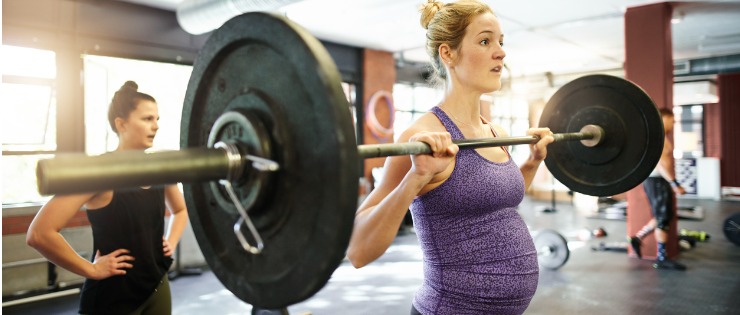
Pregnancy. It’s an exciting time for many women.
For others it may be littered with anxiety or nervousness for what is to come.
For some it may be challenging to watch your body grow, feel your physical capabilities shift, realise that your hormones can make you an emotional (and sometimes irrational) person.
As I head into week 32 of my third pregnancy I can assure you I have experienced all of the above.
Each pregnancy was different; but the one thing that ran true through all was how difficult I found it to deal with ongoing, out of my control, change. Discovering that my body was no longer capable of what it once was, especially when it came to exercise.
I am certainly not alone in this experience and as a physio working in Women's Health it’s a conversation I often find myself having with my pregnant clients.
Why is exercise so strongly recommended? There is continually new research that supports the benefits of exercise during pregnancy. What we know for sure is that having an ‘active pregnancy’ can help to reduce the risk of developing gestational diabetes, preeclampsia and mental health disorders including depression. There is also evidence that exercise can reduce the likelihood of back pain and pelvic pain and may assist in preparing the body for labour and post partum recovery.
How much exercise should a pregnant woman be doing?
I believe there are a few things to consider here and it’s not really a simple checklist that you can tick off as you progress through the trimesters.
The guidelines in Australia recommend that if mother and baby are healthy you should aim for:
Ideally this would incorporate some muscle strength training 2 days a week which may include light resistance or body weight exercises.
The easiest way to measure intensity of exercise is to self administer the ‘talk test’.
If you can carry out a comfortable conversation during your chosen activity then its moderate intensity. If you are unable to continue with a conversation then it’s considered vigorous intensity.
Women who were relatively sedentary prior to pregnancy are encouraged to start with low intensity forms of exercise such as brisk walking or swimming and aim for the lower end of the recommendation ranges.
Women who have trained at higher intensities may find themselves able to continue with more of the vigorous intensity exercise early on but will usually need to adapt their training load as time goes on.
Women who have medical contraindications to exercise during pregnancy should be working closely with their OB and GP and taking their advice with regards to what they can and can’t do.
I think it’s also important to consider how each individual actually feels. Energy levels and motivation may come in waves throughout pregnancy. Some days you may feel like you could conquer a double session at the gym but the next day you can barely get yourself out of bed to go to work.
Be kind to yourself. Listen to your body. Its ok to have days where you do very little. On the days you feel good maybe you can do a little more.